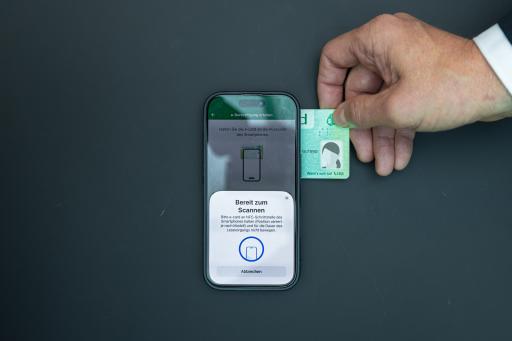“The doctor can read his patient’s e-card with his smartphone, and the insured person can give the doctor remote access to his e-card system. The smartphone thus becomes an e-card reader,” says Peter Lehner, co-chair of the conference of social insurance providers, and continues: “This is a milestone in the digitalization of the health system, as these functions provide location independence and a new level of flexibility make possible. This creates comprehensive relief for people in need of care, a new service level for all insured persons and the basis for telemedicine.”
“Doctors can use their smartphone and the ‘My SV’ app to read their patients’ e-card and thus gain secure access to the e-card system. This can be done regardless of location – during rounds or in the nursing home. Insured persons can give their doctor remote access using their e-card, the ‘My SV’ app and e-authorization. This means you don’t have to come to the ordination every time. This creates the prerequisites for telemedicine,” explains Lehner. The basis for these functions are the NFC-enabled e-cards and smartphones. The doctor must confirm the e-authorization within 24 hours. It is then activated for 90 days, just like when you insert an e-card.
“Thanks to the new e-authorization, the doctor can now also access the patient’s e-medication and e-findings after the home visit or nursing home visit in the office and save prescriptions in the e-medication,” says Edgar Wutscher, Vice President of the Austrian Medical Association and Federal Curia Chairman of the resident doctors, a great advantage. In addition, patients can give their doctor mobile access authorization so that prescriptions can also be saved in e-medication when prescriptions are issued over the phone. Furthermore, an entry or addition to the e-vaccination certificate can also be made if the e-card has been forgotten.
“I would particularly like to highlight the exemplary involvement of the medical profession. From the beginning, the e-health department of the Federal Curia involved practicing physicians in the process,” says Wutscher. The concerns of the medical profession were accepted and incorporated. “We were able to create a low-threshold and uncomplicated solution, without adjustments or additional interfaces in the doctor’s software and therefore without additional costs. This means that social security and we have a new project that shows how well we can work together,” says the ÖÄK Vice President.
“The solutions are simple and secure because the e-card network is used,” emphasizes Lehner and emphasizes: “The insured person can check at any time in ELGA whether and when access took place. This transparency creates security.” Data transmission takes place with end-to-end encryption and corresponds to the state of the art. The authenticity is checked in the e-card data center. The app user has no access to the data. Therefore, ID Austria is not necessary for this application.
“The digitalization of the healthcare system started over 20 years ago. We match the needs with the current technical possibilities. This allows us to continually develop the system further. Technological progress is the driver and enables new things,” says Lehner. The development was carried out by SVC (Social Insurance Chip Cards Betriebs- und Erfassungsgesellschaft mbH), and the social insurance company invested a total of 600,000 euros in these functions.
OTS ORIGINAL TEXT PRESS RELEASE UNDER THE EXCLUSIVE RESPONSIBILITY OF THE SENDER FOR CONTENT – WWW.OTS.AT | NHS
